North Midland AGS Show, 2013
After the topsy-turvy start to this year’s show season, thrown into disarray by gas mains ruptures and somewhat unseasonal snow, it was very rewarding, and a great pleasure, to look out over a show hall filled with the vibrant colours of the plants that had just been waiting to come to life in what had been a very difficult season to date. Travelling north to Chesterfield was a very chilly experience but that discomfort was soon relieved by the buoyant good cheer of the exhibitors at last doing what they all enjoy: bringing along their plants and swapping anecdotes. Though held only seven weeks beforehand, the Caerleon Show seemed long, long ago. Snow still margined the car park, where space was at a premium: with a bit of cooperation and wiggling around, everything was okay. And upon entering the hall there were some wonderful plants benched, 568 in all from 70 exhibitors.
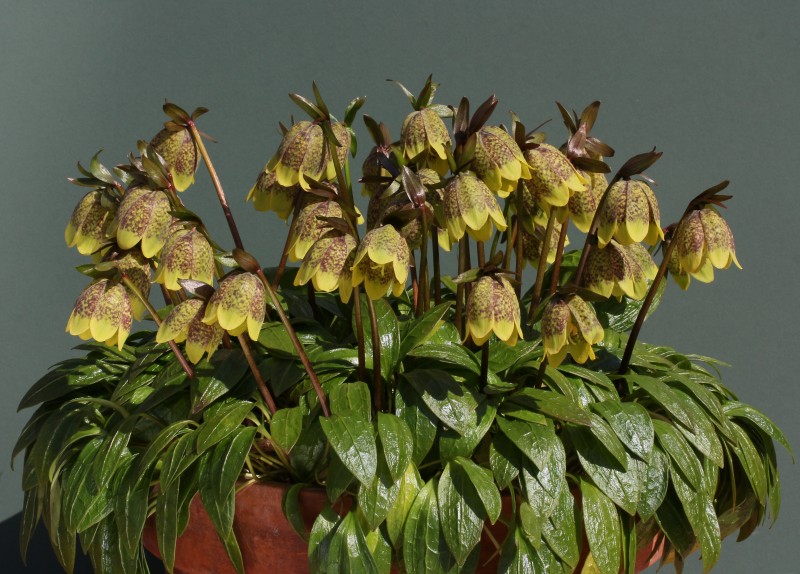
I am going to start my report with the Farrer Medal winner. Now this is slightly difficult since this was Fritillaria davidii, exhibited by Brian & Jo Walker. This exhibit started off as two bulbs that were left in their terracotta pot until the clump became pot-bound. Reading up the information on its natural habitat in western China revealed that the ground is more or less always damp: this most unusual of fritillarias often inhabits rock crevices by streams in semi-shade. Accordingly, we moved it to a semi-shaded position in the alpine house, and it has stayed there ever since.
Moved to a slightly larger container only when pot-bound, it has thrived in a mixture of John Innes no. 2, humus and grit, the compost never allowed to dry out, even during its May-October dormancy. When we arrived and staged the plant with its forty 48 flowers, a frisson of excited oohs, ahs and wows bolstered hopes of a medal. A wierder day at a show I haven’t experienced: hugs and kisses (for me) were great fun and the marvellous comments were much appreciated. The Chatsworth Trophy, given to the best pan of a bulbous plant, was an added bonus.
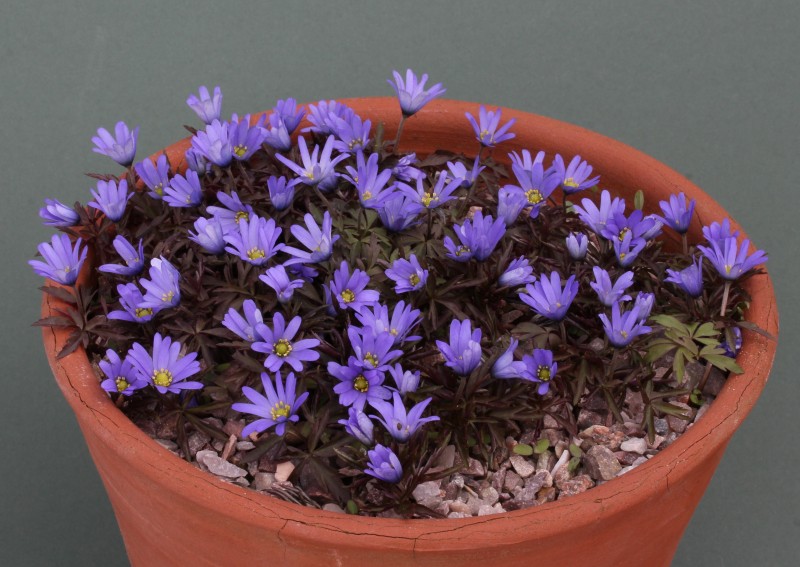
A lovely grouping of rich blue-violet Anemone caucasica, grown by George Young, was awarded the John Saxton Trophy for the best plant native to Europe, although its north-eastern Turkish, Caucasian and Iranian mean that it is at the very fringe of that continent. George tells me that he grows this outside in as much light as possible in John Innes no. 2 and grit. It normally inhabits subalpine meadows at up to 2,000m, flowering early in the year and often forming extensive colonies, like a miniaturised version of the well-known A. blanda. This form was darker than those one might ordinarily encounter, and quite lovely.
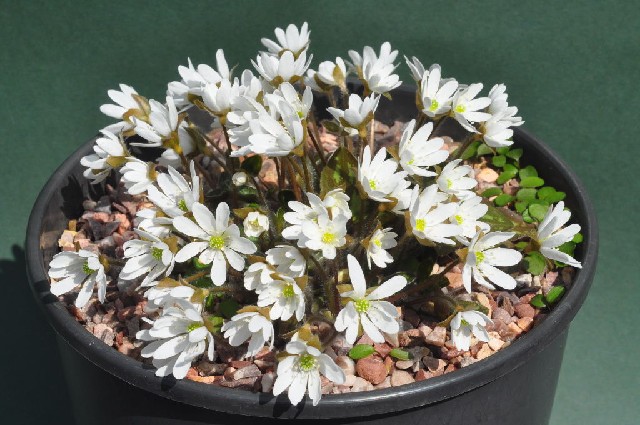
In the same class, for one pan Ranunculaceae, Lionel Clarkson showed Hepatica insularis from South Korea. First exhibited at Cleveland the week previously, it was now in full flood, the delicate white flowers rather similar in form to the foregoing, and even more abundant. Grown outdoors in an open cold frame, in a general purpose alpine compost and housed in a deep black plastic pot to accommodate its sizeable root system, it is far less often seen than its European and Japanese counterparts. Lionel obtained it some five years ago, and is pleased that it has not only settled down, but seeded around liberally at the edge of the pot: several fellow exhibitors asked if they could uproot a few of the young plants!
A lovely deep rose-coloured Trillium rivale was exhibited by Alan Spenceley, who tells me this plant is 40 years old and was originally received from Dave Riley, prior to his years in Hong Kong. This dwarf native of the Siskiyous hated the British winter of 2010-11, and has been far less often shown subsequently, so this was a very welcome return to form. Although grown in a frame that is covered during the winter, it will also grow well in the open, where the greater soil mass prevents the freezing at the root that it greatly dislikes.
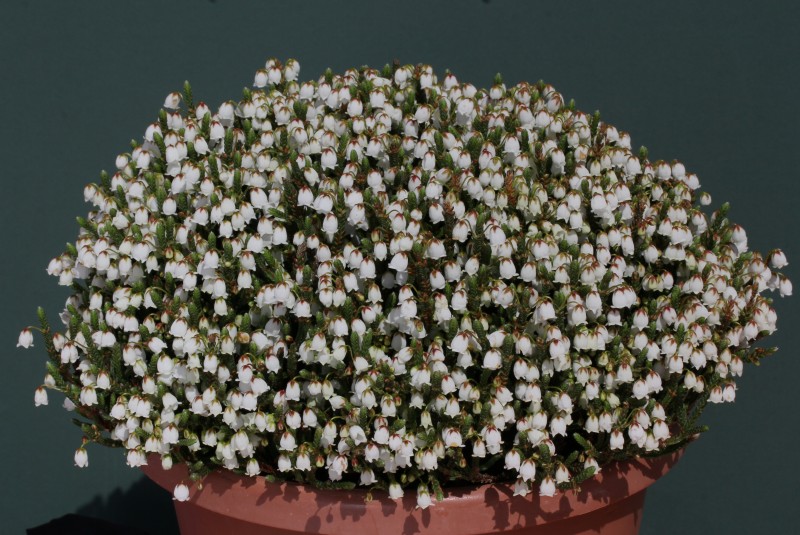
East Anglia isn’t a region that one automatically looks to for first-rate ericaceous plants, yet Cecilia Coller’s Cassiope ‘Muirhead’ (first exhibited the previous week at the London Show) was a magnificent example of one of the finest hybrids raised to date, winning her the Chesterfield Vase by unanimous vote. It normally spends the rest of the year plunged in a peat bed, but in the early months of 2013, heavy snow prompted its removal to a glass-covered site, where it was destined to remain, inter alia, until the finish of its show bench performances for the year.
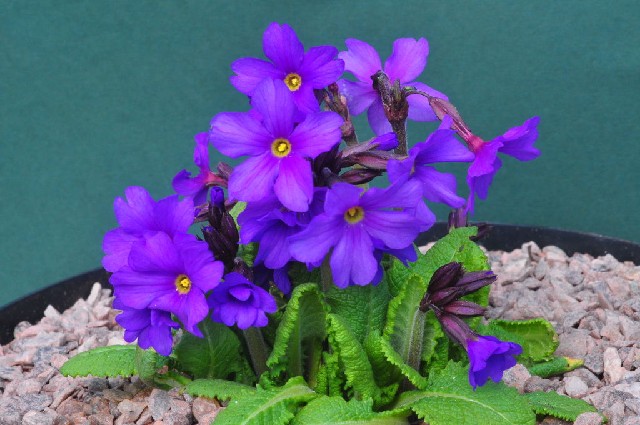
I was very taken by a four-year old Primula elatior subsp. meyeri exhibited by John Richards. This plant had been grown in a compost rich in leaf-mould, sited in semi-shade for half the day and in a slightly raised position. Lifted from there a fortnight before the show, it was destined for replanting in the same spot upon return. The seed had been obtained from Vojtĕch Holubec’s list, sourced from the western Caucasus at 1,800m. This oxlip offshoot is the most distinctive of several subspecies: its range extends to north-eastern Turkey, and rose through to deep- or purple-pink or very rarely pure white flowers can be expected. Plants normally first flower in their third year from sowing, and are normally rather short-lived.
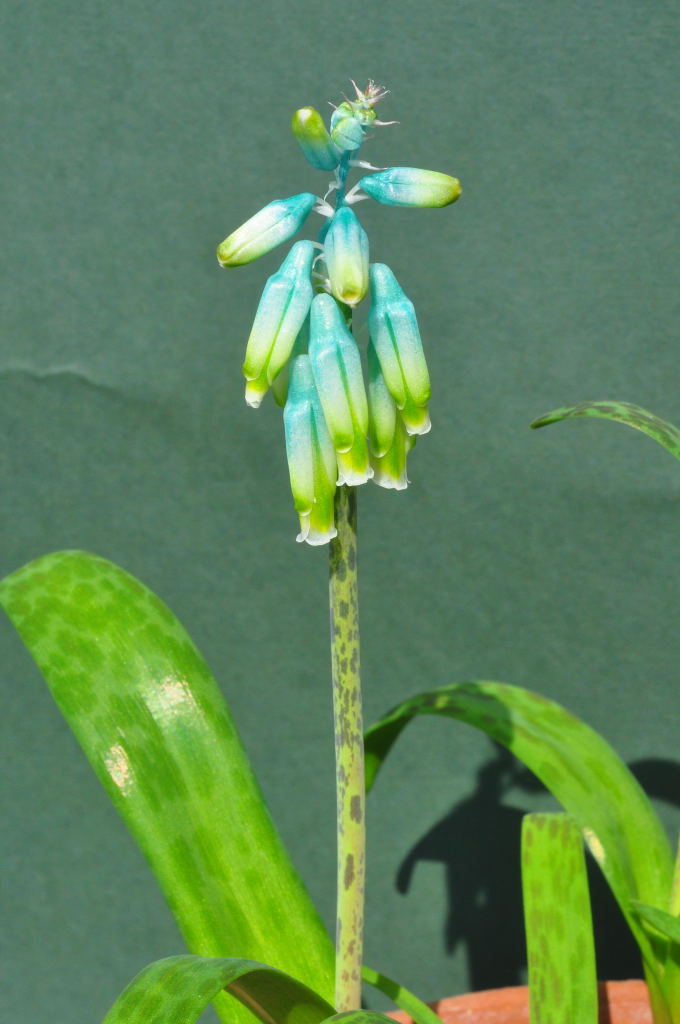
A change of continent: Lachenalia aloides var. vanzyliae exhibited by Dave Mountfort caught many people’s attention. One of 80 or so species from the Cape region, it is a species of sandstone and granite outcrops, flowering from May to October in its homelands, though in mid-spring in the British Isles under glass. Grown in an unheated conservatory, and kept dry during dormancy, it has increased modestly over the past three or four years. Mealy bug is the pest to watch out for: an inoculation of Provado or similar is prudent.
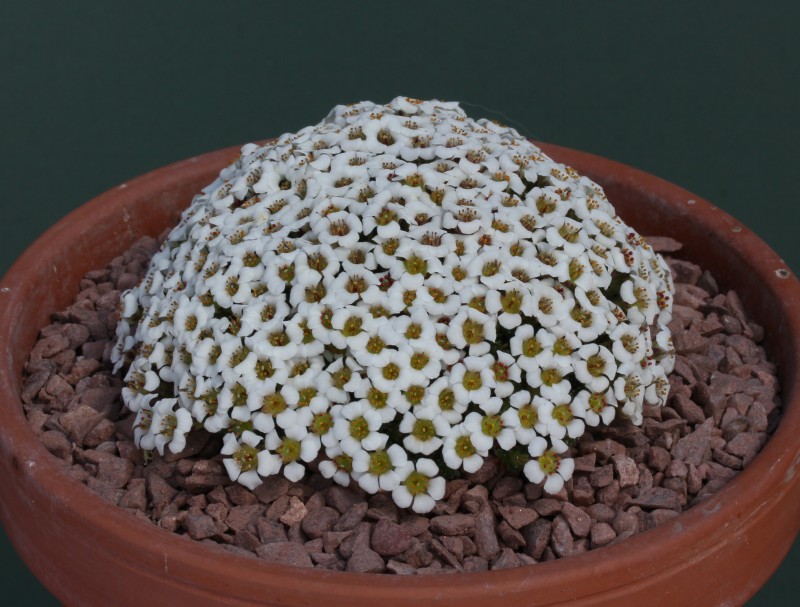
There were some very creditable plants in the Intermediate Section. The aggregate Nottingham Shield trophy for this section was won by Tony Stanley, who exhibited a good specimen of Saxifraga georgei FW83 (expert opinion queried the purity of this stock). He keeps the plant in a sand plunge in an unheated greenhouse with partial shade and pots it on every year after flowering in a mix of three parts grit, two of John Innes no. 2, and one part composted bark, with a topdressing of 10mm grit. The plunge is kept damp all year round, and it is important that the plant received good light (and good ventilation) throughout.
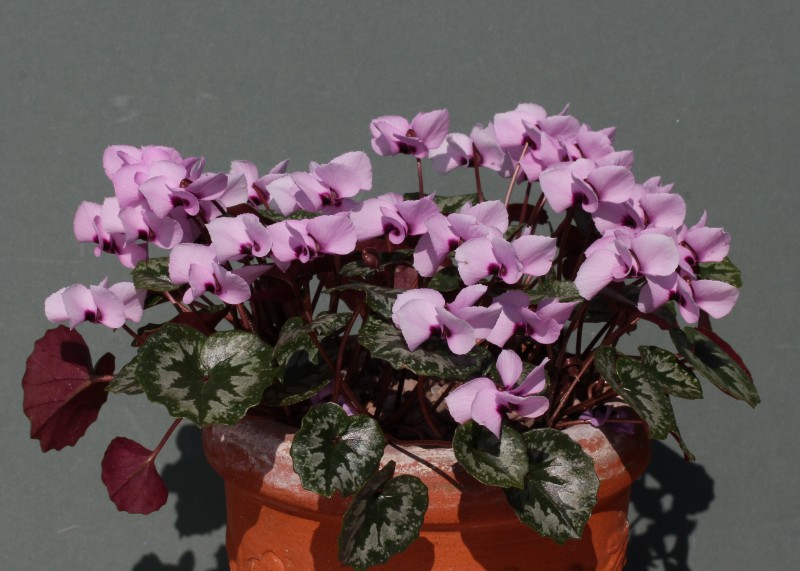
There were 28 plants in the Novice Section but only seven exhibitors: come along, all you beginners! Everyone has to start at the beginning and develop their collection. Robert Worsley won the Nottingham Junior Challenge Trophy and had some lovely exhibits, including a very nice, very late-blooming Cyclamen alpinum. Good pots of Fritillaria michailovskyi and the brilliant yellow Dionysia MK010215 were also of note. Well done, and keep it up!
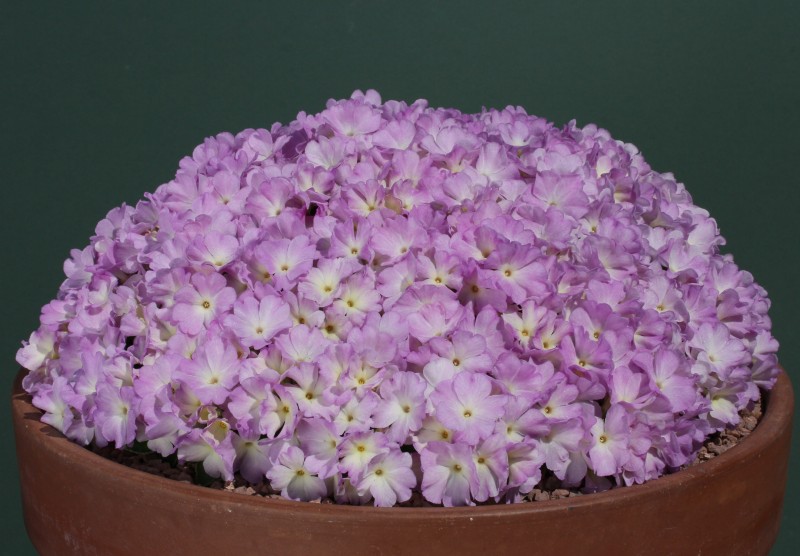
I will finish with a little warning. Take care to research your plants before entering them in a given class. A magnificent Primula ‘Pink Aire’, unfortunately placed in a class for a species or a natural hybrid (whereas this is of man-made, artificial origin), was disqualified as not according to schedule. By far the heaviest plant in the show, it was absolutely covered in white, pink tinged flowers of good size on the shortest of stems, and richly deserved its Certificate of Merit, for all that it landed in the wrong class, and as such in the wrong company.
Author: Jo Walker
Photographers: Jim Almond and Robert Rolfe
